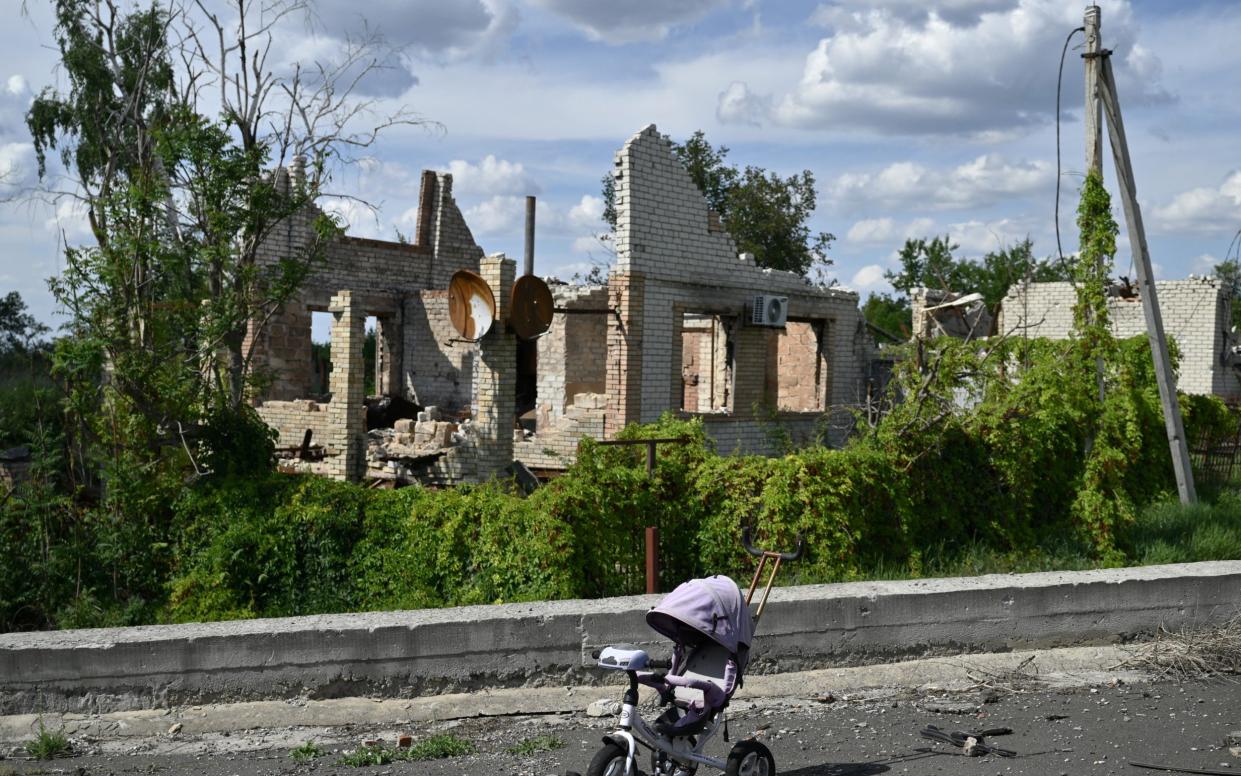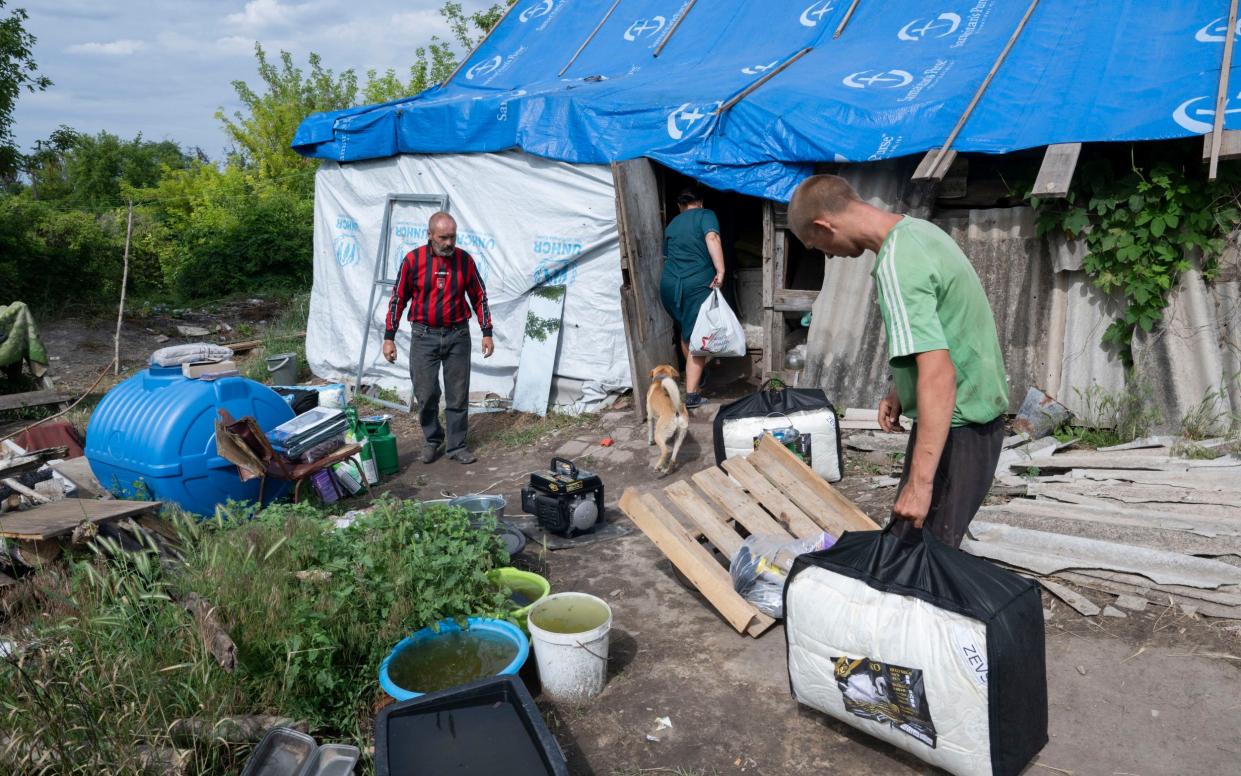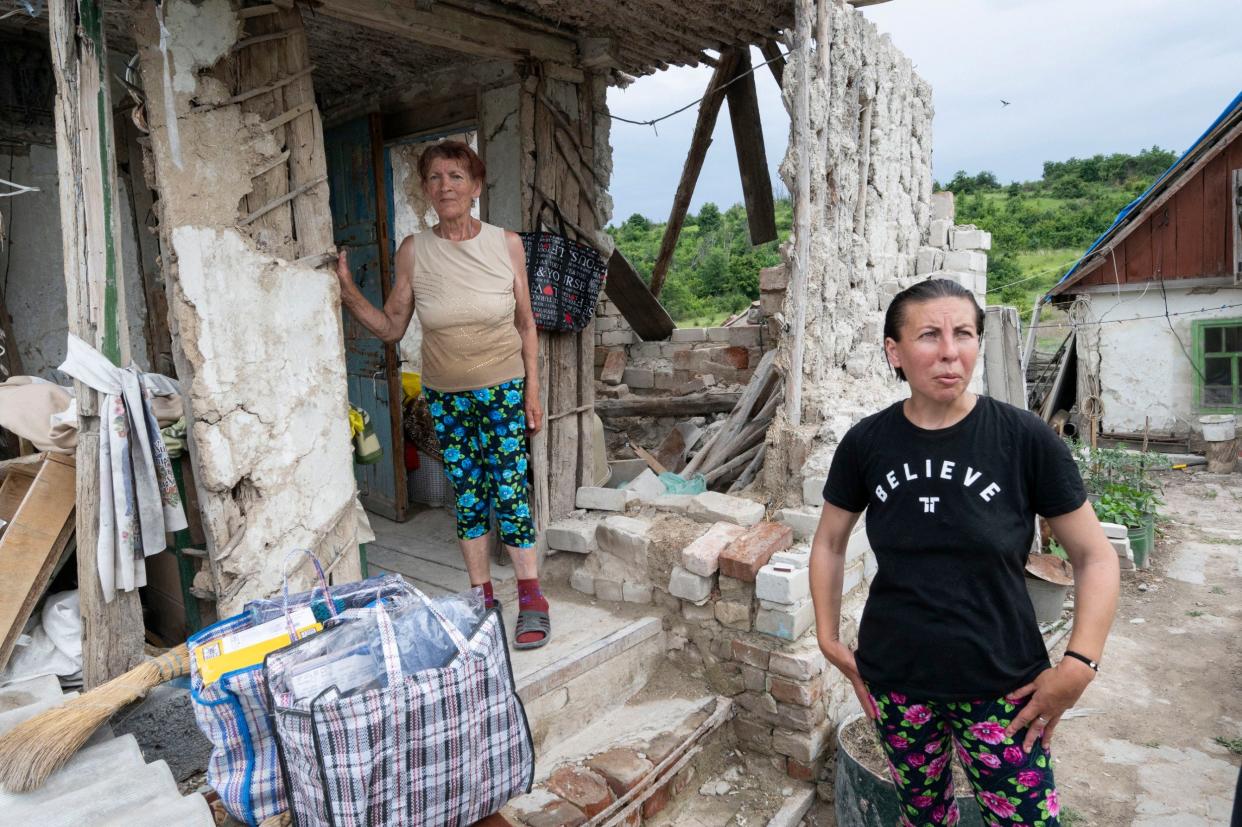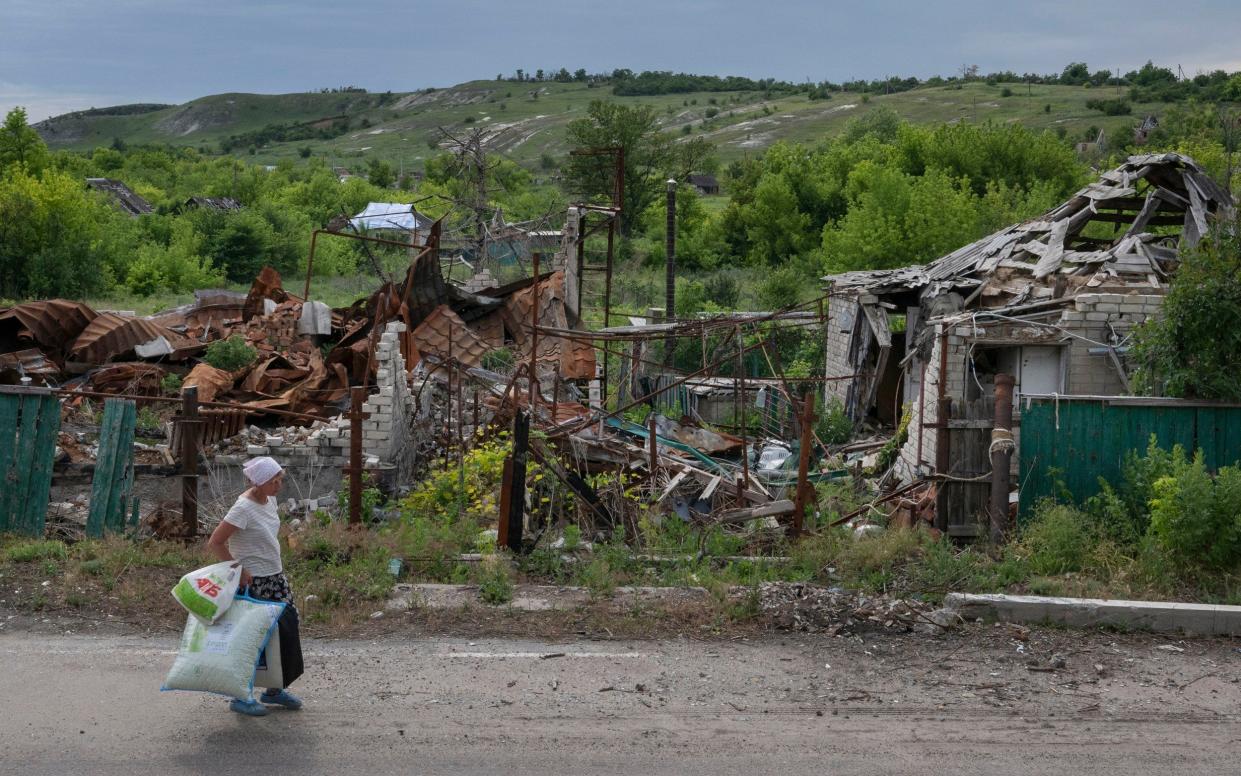Ukrainians return to shattered villages, to eke out lives in the shells of homes

When war tore through the idyllic village of Bohorodychne it blasted nearly every house.
The homes are now largely empty shells, while the pale blue walls of the church are sprayed with shrapnel and its golden domes are smashed.
Nearly two years after the village was liberated from the invading Russian forces after heavy fighting, little reconstruction has taken place and its lanes are quiet.
The village is largely deserted, but not quite. Of around 800 residents living in the village before the war, some 24 have returned.
They eke out their lives in the remains of their shattered homes, which have been patched up with tarpaulin and plywood. They are reliant on charities for nearly everything.

Red warning signs planted around the village are a reminder that the fields, gardens and orchards are strewn with mines and unexploded bombs. Two months ago a resident was blown up in their own back garden.
Village life is in limbo. A lack of money and rebuilding means the village cannot get back on its feet. Yet in villages like this and others along the 620 mile front line, villagers are also reluctant to move back and aid agencies are hesitant to commit what reconstruction resources they have because the rumble of shelling is a reminder that the fighting is still relatively close by.
The village is well within reach of Russian bombs and any building being rebuilt now could find itself damaged again.
Across southern and eastern Ukraine, towns and villages that were liberated by Kyiv in the autumn of 2022 find themselves in the same situation, creating a drawn out humanitarian crisis for hundreds of thousands of people.

Oxana and her family are among those who have moved back to Bohorodychne, setting up in the remains of their house.
“We have been here since November,” she said.
“It’s slowly getting better, but we wouldn’t be able to live here at all without aid from the volunteers.
“It was a good village before the war. There were many people. Some people had holiday cottages. Before the war it was all good. Now look at it.”
Kolya stayed throughout the fighting, sheltering in his basement while the village changed hands several times.
“It was a beautiful village, I had a nice house, now it’s all ruins,” he says.
“I was in the middle. The Russians were in the church and the Ukrainians were up that lane. I spent three months in my basement. I was concussed twice and my brother was killed. It’s a bad memory, I don’t want to talk about it.”

Raisa, aged 75, and her daughter, Alyona, aged 38 are renting a room from him because their own house has been flattened. They have tried to tidy up and plant vegetables, but three quarters of the building is rubble.
Residents rely on groups like the UK charity World Jewish Relief, which hands out aid in the village.
Oleksiy Tolkachov, one of the charity’s local staff, said: “They have nothing at all. There are no surviving buildings. They needed help with everything.
Rather than just food, the charity hands out tools, roofing sheets, cooking gas and even chickens to try to get recipients back on their feet.
Mr Tolkachov says“I couldn’t imagine how they live in such conditions, but all that we can do is bring some support.
“It’s not just humanitarian aid, it’s an act of love and attention. It’s a big danger for them to feel lost, that no one loves them and they are forgotten.”

Many residents from villages in the region have moved into the nearby town of Sloviansk.
Here they complain that while they have access to better facilities, they can scarcely afford them.
A woman called Katerina says: “My house is completely burnt out. I would like to go back, but don’t want to go and live in a basement. I spent a month in a basement before.”
She has already spent months in a nearby monastery, but grew tired of the monks insisting refugees attend church several times each day in return for aid.
Another villager, called Oleksander said: “I can’t go back, because my house is totally destroyed, but here in town we receive almost nothing and we need to spend money on bills and things.”

Nearly a million Ukrainians are estimated to live in towns and villages within 15 miles of the front line, often in very difficult conditions.
Marysia Zapasnik, country director of the Netherlands Refugee Foundation, said: “Areas that are now back under Ukrainian control, it’s definitely not life back to normal.
“Having said that, it’s very sad that living under constant shelling, missile attacks and drone attacks, has for those people become normal and yet it should not be normal.”
The foundation is working with people living near the front line in the southern city of Kherson.
She said: “Because they are living so closely to the front line. there’s no point doing proper reconstruction because its so likely that their houses will be damaged again.
“So we are just patching with tarpaulin sheets, with wooden boards, just to make the buildings weatherproof and liveable in some way, but it’s not possible to do an proper rebuilding because of the constant shelling.

Kherson was liberated in November 2022, but the Russian forces were only pushed a couple of miles away onto the left bank of the Dnipro river. The city, on the right bank, has been shelled daily ever since.
Residents are kept awake each night by wailing air raid sirens and the sound of both incoming and outgoing artillery. Around three-quarters of the pre-war population has left.
“It’s going to become a ghost town unless they can stop that shelling,” said one local official.
Charities and aid agencies provide much of the support to those who have lost their homes near the front line.
As Russian troops once again invaded the Kharkiv region in May, thousands fled their homes and headed towards the city.

One initiative on hand to help was a six-carriage train converted into a massive mobile kitchen which can serve up roughly 10,000 meals each day to be distributed by local authorities.
The train is funded by the Howard Buffett Foundation, run by the son of the billionaire investor Warren Buffett.
Back in Dolyna, one of the villages next to Bohorodychne, one of the largest problems preventing people returning is the large amounts of unexploded ordinance.
Oleksander is employed as a watchman to secure the tractors and combine harvesters that should be at work in his boss’s fields.
But the fields are not safe and he estimates only one per cent have been de-mined. He lives in a shed and is dismissive of the idea his village might soon come back to live.
“It’s not coming back to life because there’s nowhere left to live,” he says.
Protect yourself and your family by learning more about Global Health Security


